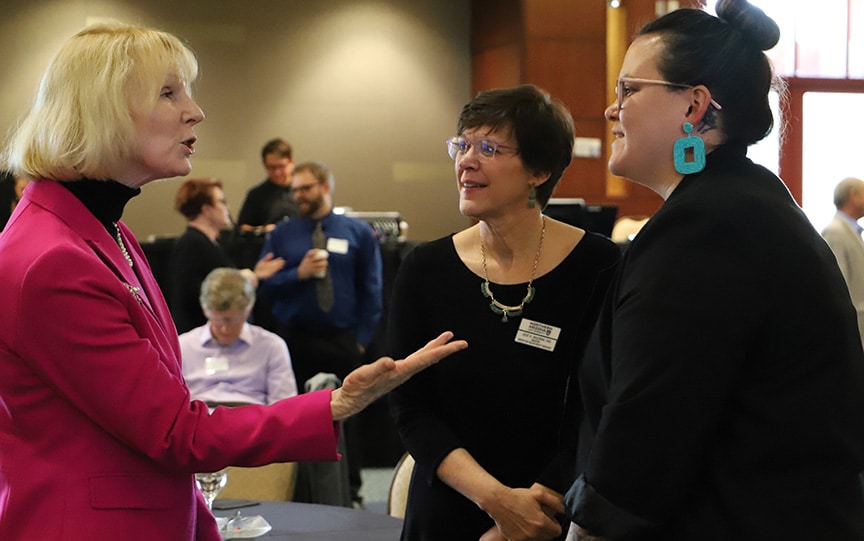Oct. 10, 2019
Disparities in the nation’s juvenile justice system are prevalent and well-documented. According to Law Street Media, it is estimated that more than 61,000 youth in the United States are incarcerated each night. More than 65 percent of those are youth of color.
To help address these challenges, Northern Arizona University’s Center for Health Equity Research (CHER) recently hosted a one-day workshop, in partnership with the Roundtable on the Promotion of Health Equity of the National Academies of Sciences, Engineering, and Medicine (NASEM), The NARBHA Institute and the Arizona Biomedical Research Centre.
The event, “The Consequences of Juvenile Justice System Involvement on the Health and Well-Being of Adolescents, Families and Communities of Color,” brought 170 policymakers and influencers to Flagstaff, including local and national judges, attorneys, social workers, probation officers, health care providers, community members and researchers, as well as state, county and city officials, to examine strategies for transforming the nation’s juvenile justice system. More than 250 others attended the event via video conference.
CHER director Julie Baldwin and Mark Carroll, chief health officer and vice president of discovery and development at The NARBHA Institute, moderated the workshop along with other members of the NASEM Roundtable on the Promotion of Health Equity.
“We see this as a critical launching point for dialogue and action around this topic, both locally and nationally,” Baldwin said.
Keynote speakers at the event were Scott Bales, executive director of the Institute for the Advancement of the American Legal System (IAALS) of Denver and former Arizona chief justice, and Judge Kathleen Quigley, from the Pima County Juvenile Court and a Northern Arizona University alumna.
Bales cited compelling statistics, such as the fact that African-American youth in Arizona are referred to the juvenile justice system 3.7 times more often and American Indians are referred 1.8 times more often than Caucasian youth. About one in five referrals resulted in detention; however, youth who are American Indian had a detention rate of two and a half times that of white juveniles. He said that African-American youth are charged five times more often and Hispanic youth are charged three times more often than white youth.
Quigley said one of the key goals of the Arizona courts was to reduce the number of juveniles in detention and to connect families to services. She focused on positive changes in Arizona for youth in the juvenile justice system, such as the state’s recent achievement of reducing admissions to detention by 50 percent—in fact, she said, a few Arizona counties have reduced their numbers so effectively that they were able to close their detention centers and turn them into youth recreation centers. As an example, Quigley noted one Apache County community in which more than 300 youth have engaged in one of the converted youth centers, representing 95 percent of the students from the local high school.
“Navajo County and Apache County are leading the way and there really have been impressive outcomes,” Quigley said.
Three panels of juvenile justice experts from Arizona and other states participated in a series of discussions, “What we Know about the Effects of Involvement with the Juvenile Justice System on Health Outcomes for Vulnerable Populations,” “Alternatives to Juvenile Detention in Building Systems of Justice and Equity” and “What Do We Still Need to Learn? Where Should We Go in the Future?”
Throughout the day, experts discussed challenges in the juvenile justice system, especially for communities of color; they also shared successful, established programs and policies that serve as models for the nation.
A special group of young adults, counselors and parents also shared their experiences in the juvenile justice system with attendees during a lunch session.
The presentations are available on the workshop website.
Photo: From left, Judge Kathleen Quigley, an NAU alum, talks with Julie Baldwin and Carly Camplain from the Center for Health Equity Research at the juvenile justice workshop on Sept. 26.



